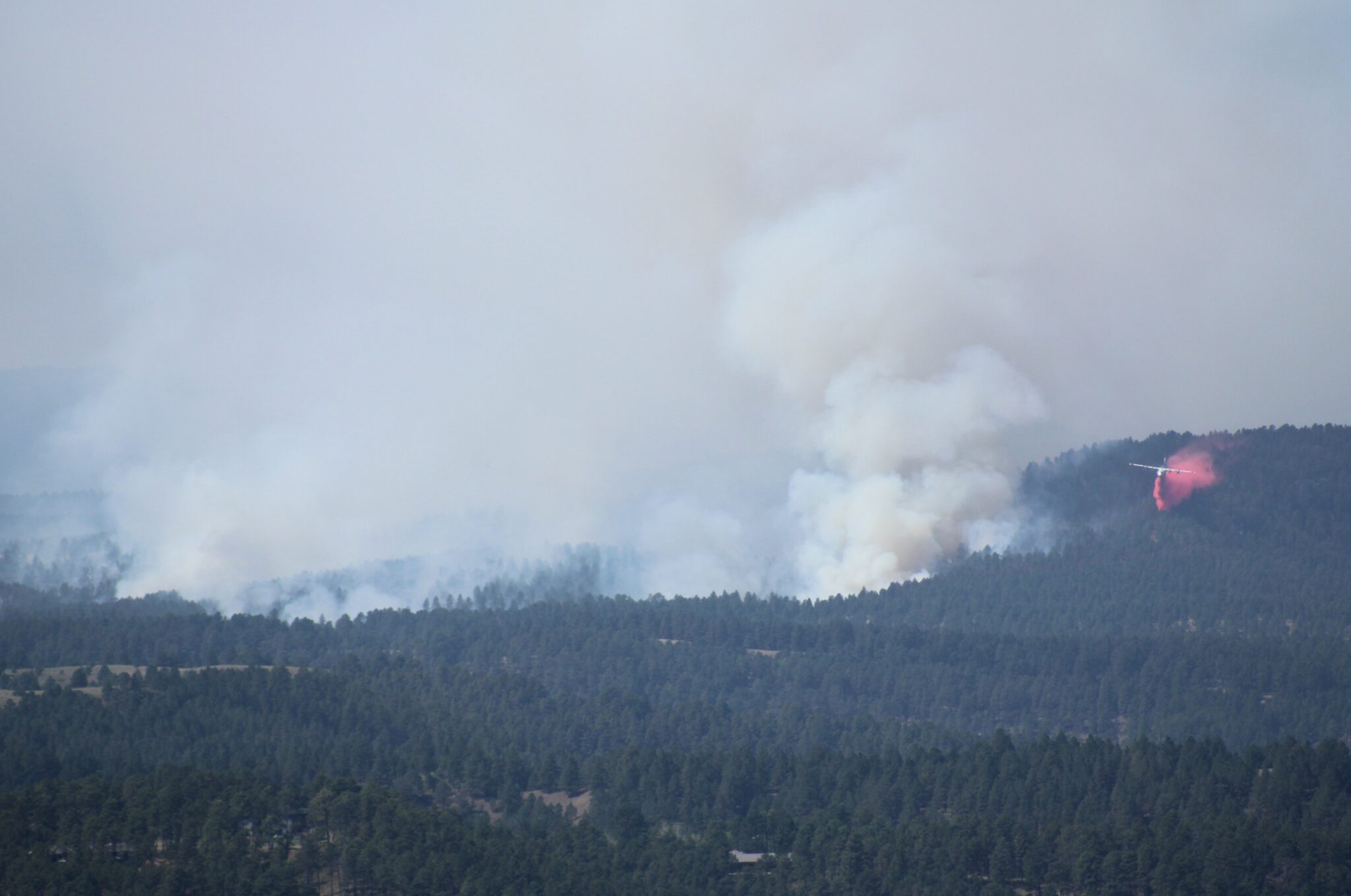
Makenzie Huber/South Dakota Searchlight
Public safety officials are scrambling to make backup plans after Black Hills Energy announced it will develop a public safety power shut-off program this summer.
A public safety power shut-off is when a utility company turns off power to a community or area to mitigate wildfire risk.
Trent Nincehelser, state radio manager for the South Dakota Bureau of Information and Technology, told members of the state Public Safety Communications Council at its Wednesday meeting in Pierre that state officials are “still wrapping our heads around” how the plans will impact emergency responders.
“As you can imagine, that creates a whole host of concerns for us in the public safety community,” Nincehelser said.
Shut-offs can disrupt communications, water wells and air conditioning as well as access to other needs, such as medical devices, that rely on electricity. The strategy has grown in recent years after a Pacific Gas & Electric equipment failure ignited the 2018 Camp Fire, which killed 84 people, ranks as the deadliest wildfire in California history and resulted in billions of dollars’ worth of lawsuit settlements. The year before that, wind blew a tree onto a Black Hills Energy line in Custer State Park and ignited the Legion Lake Fire, which became the third largest wildfire ever measured in the Black Hills.
Several factors are considered before shut-offs are implemented, including heat, humidity, wind speeds and the moisture level of vegetation. The shut-off is used as a “last resort” when other mitigation measures aren’t enough, according to Black Hills Energy.
Black Hills Energy Vice President Wes Ashton told South Dakota Public Broadcasting that high-risk wildfire areas more likely to be affected by a shut-off are in “rural, tree-lined areas,” not urban areas. The company said affected customers would be alerted with phone calls, text messages, emails, notifications through traditional media and social media, and on the company website.
Public utilities are able to shut off service in case of emergency, according to state law. The Public Utilities Commission does not have authority to require, approve or deny shutoff plans.
Community members and local law enforcement have expressed concern about the plan to Black Hills media outlets.
South Dakota has a statewide communications network serving first responders. Nincehelser said the state is “double evaluating” propane fuel capacity at radio tower sites, generator power backups and “controlling things we can control” for state radio.
“We’re probably not going to know exactly what the risk is until they shut the power off one day and we get punched in the nose, and then we’ll know exactly what we’re dealing with,” Nincehelser said. “But to the extent that we can plan for this, I can assure you that we have put those wheels in motion already.”
What the state doesn’t have control over, he said, is “upstream challenges” including backup solutions for internet service providers, network providers and other communications companies that public safety relies upon.
“Any time that this public safety power shut-off plan could potentially be implemented, obviously that’s a really bad time for public safety communications to go down if you’re in the most critical parts of a potential wildfire season or having concerns about wildfires sparking,” Nincehelser said.
Some other electric utilities serving South Dakota already have public safety power shut-off plans. NorthWestern Energy explains its shut-off plan and provides a map on its website. Xcel Energy explains its process for implementing a shut-off on its website as well.
The Black Hills Electric Cooperative will not implement a public safety power shut-off plan, according to its website; however, Black Hills Energy “controls the distribution system” that delivers power to a substation in the area, which could affect some cooperative members.
